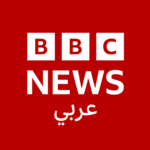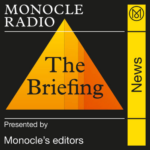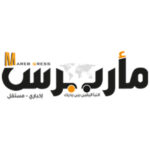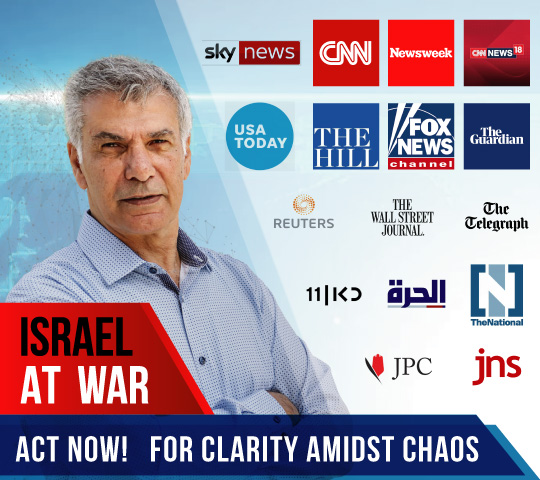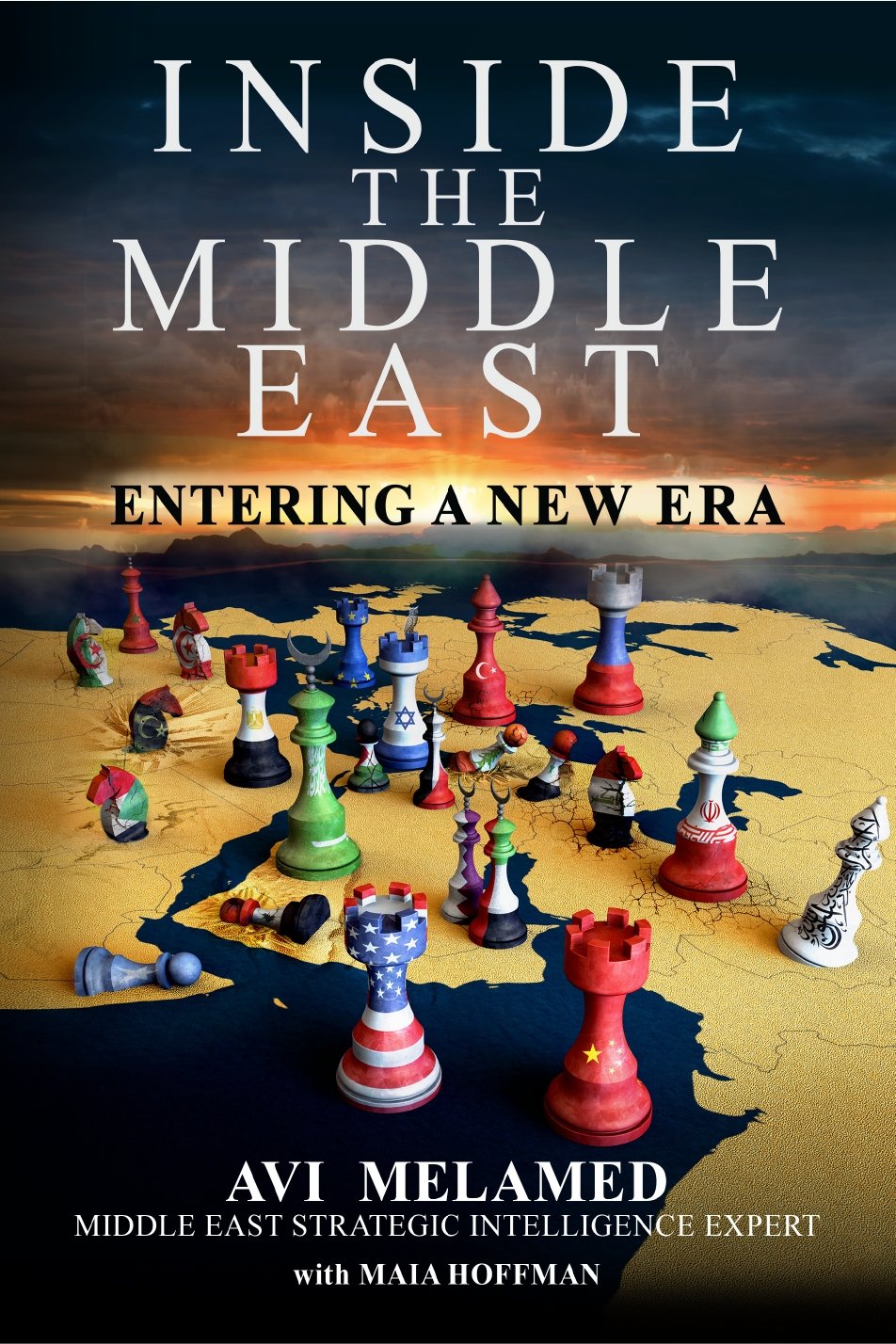|
Getting your Trinity Audio player ready...
|
A Growing Whirlpool of Violence: The Middle East Legacy of Barack Obama
On June 4, 2009 the President of the United States, Barack Obama, delivered a speech at Cairo University entitled “A New Beginning” in which he called for the opening of a new page in the relations of the West with the Muslim world. Obama’s speech created expectations for a substantive change that would have a positive impact on the Middle East.
On December 17, 2010 Tarek al-Tayeb Mohamed Bouazizi, a 27-year old Tunisian street vendor set himself on fire protesting the fine he was given by municipal authorities for the illegal peddling of fruits and vegetables. Within no time that spark led to the eruption of a massive smoldering volcano which spread across the Middle East generating a process of change of historic proportions which would influence the lives of hundreds of millions of people.
The earthquake that has been rocking the Middle East since 2010 occurred during the two-term presidency of the 44th President of the United States, Barack Obama.
To be clear, President Obama is not responsible for the enormous challenges of Middle Eastern societies, the outbreak of the events in the region known as the Arab Spring, the Iranian-Arab power struggle, or the Sunni-Shi’ite conflict.
However, many Middle Eastern, as well as Western, analysts argue that President Obama exercised poor leadership regarding events in the Middle East.
Some argue that President Obama wanted to avoid engagement in Middle East conflicts, and instead of pro-actively leading, developed the concept of “Leading from Behind” when he was led – or dragged – into events.
Some maintain that the Obama administration lacked any understanding of the Middle East, and claim he had no policy at all.
In my analysis, President Obama’s Middle East policy was characterized by three major principles:
- Attempting to avoid “boots on the ground”
- Creating and leading a global coalition to address the challenge of Militant Islamic groups
- Extending a friendly hand to the Mullah regime in Iran
Extending a Friendly Hand to the Mullah Regime in Iran
Of all his Middle East policy’s President Barack Obama’s friendly approach towards the Mullah regime in Iran has puzzled me.
Iran is formally defined by the United States as a state which sponsors terror.
Both opponents as well as supporters of President Obama agree that the Mullah regime is a dangerous, radical and violent regime, engaged in terror and encouraging instability in the region.
- Why did President Obama constantly appease a brutal dictatorship which oppresses – with an iron fist – millions of Iranians?
- Why did President Obama – time and time again – extend a hand to the Mullah regime which chants death to the USA and arrests and publicly humiliates American soldiers?
- Why did President Obama extend a hand to a regime which openly calls for the elimination of the State of Israel – a strategic ally of the United States?
- Why did President Obama extend a hand to a regime which has officially declared its objective to become the dominant regional power at all costs – and does not hesitate to use violence and terror to achieve its goals?
- Why did President Obama rush to sign the Iran’s nuclear agreement – The Joint Plan of Action, an agreement which even Obama’s supporters admit – in the best case scenario – only delayed the Iranian nuclear project? And why did he – at the same time lift the sanctions imposed on Iran which enables the Mullah regime to further fuel and finance regional instability?
Analysts offer different answers:
- Some argue that Barack Obama believes that the only right way to avoid and solve conflicts is through engagement and dialogue.
- A common explanation is that in the face of the disintegration of some Arab states and the growing challenges of Middle Eastern societies – and mostly Arab societies, Obama came to the conclusion that the Arab world is a limping horse, and therefore, US strategic interests in the region are better achieved through cooperation with a reliable, strong partner – and that he believes the Mullah regime to be such a partner.
- Others claim that economic and trade interests played a significant role – Iran is a very attractive market for US manufacturers and industries.
- Some say that Obama’s friendly policy towards Iran is based upon wishful thinking. According to that outlook, Obama believes that extending a hand to the Mullah regime strengthens and encourages pragmatic factors within the regime, and will lead to – if not to the downfall of the Mullah regime – at least to the softening of Iran’s regional and global policy, which will in turn make Iran into a rational factor which with you can do political business.
- Another explanation is that by extending a hand to Iran, Obama wishes to reshape a new power balance in the Middle East and delineate its boundaries. Why? The explanation is that Obama is deeply impacted by the intellectual Western concept that Western Imperialism and Colonialism are responsible for the dreary reality in large parts of the Middle East and North Africa. Therefore, according that explanation, Obama hopes that redesigning the path of the Middle East will “compensate for” and “undo” the West’s responsibility.
What is indisputable is that at the end of Obama’s presidency, the influence and image of the United States in the Middle East has been substantially eroded; And under the Obama administration hostility towards the United States in the Muslim world – and above all – in the Arab Sunni world – has increased.
Growing Hostility to the US in the Muslim and Arab Sunni world
Two major historic struggles have played a central role in shaping the Muslim world and the Middle East.
One axis is the struggle between Sunnis and Shi’ites in Islam.
There are almost 2 billion Muslims in the world. Most Muslims are Sunnis. A minority of Muslims – about 15%, are Shiites.
The history of the split began with the Prophet Muhammad, the founder of Islam, who died in 632. After his death, Abū Bakr, the prophet’s father-in-law, was chosen to be caliph, the Supreme religious and political leader of the Islamic caliphate.
This marked the beginning of a divide within Islam.
Some people believed that to be Caliph, one needed to be a descendant of the Prophet Muhammad.
Others believed that the person should be chosen based on his skills and virtues and need not be a descendant of Muhammad. (The fact that the first three caliphs—Abū Bakr, Umar (another father-in-law of Muhammad), and Uthman (a member of a very powerful family, the Umayyads)—were not descendants of the Prophet Muhammad indicates that most Muslims at the time likely believed that leadership should be based on merit, not bloodline).
The believers in a merit-based rule became known as the Sunnat al-Nabi (the Path of the Prophet), or in short, Sunnis.
When Caliph Uthman died, Ali – the son-in-law and cousin of the Prophet Mohammed – proclaimed himself the fourth Caliph (ruler) of the Islamic Caliphate. The believers in a bloodline-based rule became known as Shīʻatu ʻ The word shi’a in Arabic means “faction,” therefore Shi’ite is Shi’at Ali is “The Ali Faction.”
Ali, had nine wives and twenty- one children. His first wife was Fatimah, Mohammed’s daughter. The couple had two boys – Al-Hasan and Al-Hussein, and two girls, Zeinab and Um Kulthum. Ali was murdered in the year 661 CE.
After Ali’s death, his eldest son – Al-Hasan, declined to rule. His other son – Al-Hussein, demanded the throne. The Caliph at that time, Yazid ibn Muawiyah ibn Sufyan, was not pleased with Al-Hussein’s demand. The struggle for control soon became violent, and in the year 680 CE, Al-Hussein – Mohammed’s last grandson, his family, and his supporters were killed in a battle against Yazid’s army in the Karbala region (Iraq of today).
After his death, Al-Hussein ibn Ali became a symbol of tortured sainthood within Shi’a and he is referred to as “the Master of Martyrs” by Shi’ites.
The slaughter at Karbala is the cornerstone of the Shi’ites.
Since 680, the struggle between Sunni Islam and Shi’ite Islam has been one of the key factors which has shaped regional history. An abyss of hostility, differing ideological and theological opinions, political clashes, and mutual violence has divided Sunni and Shi’ite Islam for more than 1300 years.
An additional axis which has played a role in the shaping of the region is the rivalry between two large regional civilizations: The Arab civilization which emerged from the Arabian Peninsula on the one hand, and the Persian civilization on the other.
Hundreds of years of political, military, and cultural rivalry have characterized the relations between these two civilizations. At a certain point, the Persian civilization converted to Sunni Islam and later adopted the Shi’a faith.
The unbridgeable animosity between Shi’ites and Sunnis in Islam as well as the historic rivalry between the Arab and Persian civilizations are two of the mega factors shaping the history of the Muslim world and the Middle East.
As far as the Sunni Muslim Arab camp is concerned, President Obama, during his presidency, sided with Iran and the Shi’ites – in their mind choosing the wrong side.
Iran on its way to becoming a Regional Super Power
During Obama’s double tenure, with his – at minimum – silent consent, Iran has made substantial and tangible progress towards achieving its goal of becoming the leading regional super power at the expense of the Sunni Arabs.
At the end of Obama’s term, four Arab states – Iraq, Lebanon, Syria, and Yemen are under direct and indirect growing Iranian influence.
Iranian military forces, including the Iranian Revolutionary Guards, are present and operating in Iraq and Syria.
In addition to Iranian forces, an estimated more than 100,000 Shi’ite Militants – Afghans, Hezbollah, and Iraqi Militias which are supported, financed and guided by Iran, are operating in Iraq, Lebanon and Syria.
In Yemen, the Iranian backed Shi’ite Houthi tribes occupy northern and central Yemen – including its capital, Sana’a.
During the last year of President Obama’s term, the Mullah regime declared that the area stretching from Iran to the Mediterranean Sea is “vital for Iran’s strategic interest and national security.” And they have made very substantial, significant progress on the ground to ensure influence and control of this corridor.
The Destruction of Iraq and Syria – Who is to Blame?
The Sunni Arab animosity towards the United States is further fueled by the destruction of Iraq and Syria – a process in which Iran has been directly involved.
In September 2015 the lifeless image of 3- year old Syrian refugee Alan Kurd on the seashore was broadcast across the world. In August 2016 a photo of 5-year old Syrian boy named ‘Omran sitting dazed and silent in an ambulance also captured the Western media’s attention for a short period of time. The Western media however, was very quickly diverted by other issues.
On the other hand, Arabs from around the world are exposed all day, every single day to uncensored, horrifying photos and videos streaming from Iraq and Syria, showing butchered babies, children, women, elderly and more. Reports of ethnic cleansing, rape, and other atrocities conducted by Shi’ite militias in Iraq and Syria against Sunnis spread in the Arab world like wildfire.
Many in the Arab world hold the United States responsible for the destruction of Iraq and Syria. Especially Syria.
Many Arabs argue that “Bush handed Iraq over to Iran and Obama handed Syria over to Iran.”
The growing animosity towards the US in the Muslim Sunni world inspires young Sunnis to join Militant Islamist groups like Al-Qaeda, ISIS, etc. who pledge eternal war on the US. These young people-turned militants are motivated by feelings of hatred and revenge. And they are determined to attack the United States in every possible way.
Leaders from across the Middle East – particularly traditional allies of the United States, do not conceal their discontent and disappointment with President Obama. Their opinions, as well as those of thought leaders and opinion makers throughout the region are expressed on a daily basis in endless articles, columns, and analyses published on Arab media platforms throughout the Middle East.
The Image of the US in the Muslim Shi’ite World is Not any Better
In the Muslim Shi’ite world there is not only ideological resentment and hatred, but also a growing disrespect for the United States.
The more President Obama tried to appease the Mullah Regime, the more disrespect that regime and its proxies showed the US.
Guided and instructed by the Mullah regime, Iranians continue marching on the streets of Iran chanting “death to America.”
In January 2016 Iran arrested and publicly humiliated United States Navy Sailors.
In October 2016 Houthi militants in Yemen (supported by Iran) launched missiles at United States ships off shores of ‘Aden in South Yemen.
Hope and Reality: Obama’s vision 8 year later is a Dismal Reality
At the beginning of President Obama’s first term, he visited Saudi Arabia and Egypt – the two leading Arab states. In a speech he made in Cairo in June 2009 Obama called for the beginning of a new chapter in the relationship between the West and the Muslim world, one that would be based upon mutual respect, dialogue and constructive cooperation.
The reality in 2017, at the conclusion of his term is far from that vision.
The United States is experiencing wave of terror attacks perpetrated by Muslim US citizens – including Fort Hood, Boston, San Bernardino, and Orlando.
Europe faces increasing Islamist terror threats. Sweden, Germany, France, the UK, Belgium, and Denmark suffered severe terror attacks perpetrated – in most cases – by Muslim citizens of those countries.
These attacks which killed hundreds of civilians and injured thousands more terrorize the West.
The US and European governments allocate massive resources – financial as well as human – trying to confront the challenge of Islamist terror and to prevent the next attack against their citizens, in their cities, states and countries.
Not surprisingly, the involvement of Muslims in the attacks in the US and Europe has resulted in a counter reaction. According to the Center for the Study of Hate and Extremism, anti-Muslim hate crimes surged nearly 70 percent in the US in 2015, reaching a level of violence not seen since the aftermath of the 9/11 – incidents tripled after the Paris attacks and mass shooting in San Bernardino, California.
Islamophobic sentiments are more prevalent in the news media, public discourse, and in everyday life – Muslims (or those thought to be Muslim) are harassed, mosques are vandalized, and passengers have been escorted off airplanes for speaking Arabic.
History has a strong sense of irony – as Obama ends his Presidency the relations between Muslims and the West in general – and the US in particular – are at an unprecedented – and lethal – low.
***
Weakening Influence of the United States in the Middle East
During President Obama’s tenure, two US rivals were able to deepen and increase their influence in the Middle East at the expense of the United States.
One is Russia.
Vladimir Putin identified the vacuum created in Syria due to the absence of United States in the Syrian arena.
He took the opportunity to re-establish Russia as a major power in the Middle East.
As of now, Putin – with a relatively low investment and without sinking in the Syrian mud – has earned very valuable strategic benefits.
At the beginning of 2017, all Middle Eastern players are very tuned to Russia’s needs and interests. And not only are all them speaking to Putin – they all have gone to Moscow to talk to Putin – the Prime Minister of Israel, the Palestinian President, the presidents of Egypt and Turkey, senior leaders of the Arab Gulf States, and Iranian senior officials.
Solidifying his position in the Middle East increases Putin’s leverage in the global balance of power – especially when it comes to issues of utmost importance for Russia – such as the deployment of missiles in Eastern Europe and increasing and solidifying Russia’s influence in the Ukraine.
In October 2016 Russia and Turkey signed an agreement to build a gas pipeline from Russia. The TurkStream pipeline would bring Russian natural gas to Europe on a southern route that would bypass Ukraine. Having a military base in Syria, provides Putin access to the major natural gas reserves in the Eastern basin of the Mediterranean Sea.
In 2017 the President of Russia, Vladimir Putin is the one that decides if Assad stays in power. And Assad staying in power is of the utmost strategic importance to Iran. Since the Islamic Revolution in Iran (1979), the Mullah Regime has built an arsenal of proxies all of whom serve the Iranian interest to be the regional superpower and to build a corridor of Iranian influence from Iran to the Mediterranean Sea, giving it access to Europe and beyond. Syria – and specifically the endurance of the Assad regime – is the linchpin to Iran’s decades of incalculable investment in this effort.
Today, the President of Russia, Vladimir Putin, whose interests do not necessarily align with Iranian interests, holds the most valuable card – a card which he can use in his relations with Iran.
For Israel, Russia’s presence in Syria is also significant. Putin – as of now – ensures that the Iran-Assad axis will not launch attacks on Israel from the Golan Heights. (For more on that matter please read my article A Bear in a Sad Circus ~ January 2016).
The second is China.
China also identified the vacuum created in Syria due to the absence of the United States in the Syrian arena.
During the war in Syria, China has provided Assad with diplomatic backing, including using its veto power at United Nations Security Council to block any sanctions on the Assad regime. Forty percent of China’s total ten vetoes ever cast at the UN Security Council have been on Syria, making it the most-vetoed issue of all time for China.
China’s support for Assad has deepened as it pivots towards Damascus. Reportedly, China is providing tactical assistance and materials to the regime as well as humanitarian aid, medical support and military training for Assad’s troops.
In December 2015 a new law was passed permitting China to be involved in military action beyond its own borders.
In January 2016 the Chinese President Xi Jinping visited the Middle East including Saudi Arabia, Egypt and Iran coinciding with China’s first “Arab Policy Paper,” outlining its vision to establish and deepen engagement within the region.
In May 2016 a new entity the Middle East Peace Forum, to be set up jointly by China’s Middle East Foundation for Peace and Development (MEFPD) and the China-Arab States was launched in Cairo whose stated goal is to promote peace in the region. According to Qin Yong, secretary-general of MEFPD, said that the Middle East Peace Forum is launched as a step forward to realize Chinese President Xi Jinping’s recommendation at the Arab League in Cairo during his visit to Egypt in January 2016, when he said, “We should be builders of peace, promoters of development… in the Middle East.”
This is quite atypical behavior for China, a country known for its very conservative foreign policy – one which tends to distance itself from remote conflicts. These actions represent a departure from the traditional Chinese stance of “non-interference” and reflect a change in China’s perception of the region and a change in its regional and global agenda.
Russia and China have identified the US absence and the weakening influence of the United States in the Middle East, and have used it as an opportunity to improve their influence in the region and beyond.
****
President Obama’s “War on Terror”
During Barack Obama’s time in office, rivals of the United States took advantage of the slogan “The War on Terror” to enhance their interests at the expense of the United States.
While Obamas’ policy regarding major issues like the war in Syria or the Iran deal is clearly puzzling in many ways, Obama’s policy in the context of the war on ISIS is decisive and clear.
In my analysis, the war on ISIS has turned into a mission of utmost priority for the Obama administration – perhaps an even overemphasized one.
Obama’s “War on Terror” has boomeranged on US interests.
At the end of the NATO Conference is Wales in September 2014 Obama said: “I also leave here confident that NATO Allies and partners are prepared to join in a broad, international effort to combat the threat posed by ISIL. Already, Allies have joined us in Iraq, where we have stopped ISIL’s advances; we’ve equipped our Iraqi partners, and helped them go on offense. NATO has agreed to play a role in providing security and humanitarian assistance to those who are on the front lines. Key NATO Allies stand ready to confront this terrorist threat through military, intelligence and law enforcement, as well as diplomatic efforts. And Secretary Kerry will now travel to the region to continue building the broad-based coalition that will enable us to degrade and ultimately destroy ISIL.”
The global coalition the United States subsequently assembled to join the US led fight against ISIS first included Arab Sunni States such as Bahrain, Qatar, the United Arab Emirates, Saudi Arabia, Egypt, Jordan and also Turkey (a predominantly Muslim Sunni state though not Arab).
However, a year later the Arab members of the coalition had dropped out. Why?
The reason was because Sunnis came to the conclusion, that Obama is using the war on ISIS as a ploy to justify and legitimize the occupation of Iraq and Syria by Iran.
It is important to understand what fuels that Sunni concern.
Iranian military forces as well as Iranian backed Shi’ite militias, fighting Sunni Militant groups like Al-Qaeda, ISIS, Jabhat al-Nusrah, etc. in Iraq and Syria – under the slogan “Fighting the War on Terror” – are slaughtering Sunnis in Syria and Iraq.
In addition, Iranian leaders and spokesman make it clear that they do not view Iran’s presence in Iraq and Syria as a temporary episode that will be over once “terror is defeated.” Iranian Mullah leaders are very clear that they view Syria as the 35th district of Iran and Bagdad as the capital of the Persian Empire.
And, as hard as it might be to believe, many Sunnis believe that ISIS is actually a joint project developed by the Iranians and the United States (some also add Israel as one of the partners) under the guise of “fighting terror” – to help Iran occupy Syria and Iraq as part of their goal of becoming the regional superpower.
Who else is Fighting “The War on Terror”? Everyone…
The slogan, “The War on Terror” which was coined by the Bush Administration after 9/11 and was significantly expanded, highlighted and emphasized in the succeeding Obama administration, has been adopted by major terror sponsors states – Assad, Iran and Russia to cynically advance and enhance their interests at the expense of the United States.
Let us briefly look at how US rivals take advantage of the slogan “The War on Terror” to enhance their interests at the expense of the United States
Bashar Al-Assad “Fighting Terror” in Syria
Practically from the beginning of the war in Syria* in 2011, Bashar Al-Assad adopted the slogan of “The War On Terror” and markets his domestic policy to the Syrian people and to foreign diplomats on the world stage – not as the perpetrator of terror – but rather the defender of the Syrian people against terror.
Assad, who destroyed his own country to keep himself in power. Assad, a brutal dictator who has killed hundreds of thousands of his people – many of them civilians, using chemical weapons, deliberate starvation, and strategic and barbaric destruction of cities and towns. Assad, a tyrant who has imprisoned, tortured and executed thousands of Syrians presents the war in Syria as a “war on terrorists who want to turn Syria into a terror entity that will threaten the world.” And Assad presents himself “as the defender of Syria – standing on the front lines to keep that scenario from materializing.”
Russia “Fighting Terror” in Syria & Yemen
Since September 2015, Russia has been fighting in Syria – mostly through the use of aerial bombardments.
Russia’s intervention came at a critical time for the Assad-Iranian axis. In the fall of 2015, it seemed – not for the first time – as if Assad’s days were numbered. The Syrian rebel groups had made significant achievements on the ground-mostly in the northwestern and southern parts of Syria, and had increasingly pushed Assad and his allies towards western Syria. In addition, The Iran-Assad axis – Assad loyalists, units of the Iranian Revolutionary Guards (IRG), and Iranian proxies like Hezbollah, Iraqi, and Afghan Shi’ite Militias, were cracking under the mounting pressure of the Syrian rebels.
In 2015 Russia said they came to Syria to help Assad “Fight the War on Terror” and stated that their goal was “to eliminate ISIS.”
However, their actions told a different story.
The Russians were focusing their attacks on Syrian rebel strongholds and were deliberately targeting civilians and civilian infrastructure – hospitals, fire engines, emergency response vehicles., etc. That strategy proved to be very effective.
At the beginning of 2017 the balance of power in the War in Syria has flipped.
The Assad-Iran axis has gained momentum and has regained control of the city of Aleppo, the second largest city in Syria which was controlled by the rebels.
In the name of “fighting terror” Russia established a military presence in Syria and now Russia and Vladimir Putin hold the keys to any political arrangement regarding Syria’s future.
As I estimated in my January 2016 article – A Bear in a Sad Circus, Putin has a grasp on Syria and he is not going to let go. Russia is in the Middle East and they are going to stay.
Another significant arena in the Middle East has opened for influence and Russia has been invited there as well.
Russia has been invited to “Help Fight Terror” in Yemen – another Arab state violently disintegrating.
This opens the door for Russian involvement and influence in one of the most significant locations in the world.
Yemen is of enormous strategic importance. Located on the Indian Ocean – linking the Indian Ocean and the Mediterranean Sea connecting Asia and Africa – Yemen is located adjacent to the Strait of Hormuz, the world’s most important energy choke-point, and controls the Bab-el-Mandab Strait – the access to the Red Sea and the Suez Canal.
In November 2011, after thirty-three years in power, Yemen’s powerful President ‘Ali Abdullah Saleh was ousted.
Yemen’s new President ‘Abd-Rabbu Mansour Hadi formally entered office in February 2012.
In the Fall of 2014 Hadi’s government was ousted following a Military Coup committed by Shi’ite tribes in Yemen known as Houthi Tribes. Their partner in the coup was none other than Yemen’s former President ‘Ali ‘Abdullah Saleh – a Shi’ite himself, who during his thirty-three years of rule was mostly engaged in fighting the Houthis.
Following the Coup, the Houthis – supported by Iran – rapidly expanded their control over vast areas of Yemen, threatening to occupy Yemen’s’ most strategic port in the city of ‘Aden in South Yemen.
The Coup and the ensuing events set off alarm bells in Saudi Arabia, Yemen’s neighbor to the north.
In response, in March 2015 an Islamic Sunni military coalition led by Saudi Arabia launched a massive military campaign aimed to restore President ‘Abd-Rabbu Mansour Hadi’s control and to push back the Houthi tribes and their ally Ali Abdullah Saleh.
As of the beginning of 2017, a bloody war still rages in Yemen. It is estimated 10,000 people have been killed, and millions have been dislocated.
Though its involvement in the war in Yemen is smaller in comparison to Syria and Iraq, Iran has a clear strategic interest in establishing and expanding its influence in Yemen.
In November 2016, Iran’s Chief-of-Staff announced that “Iran seeks to establish naval bases in Syria and Yemen.”
In December 2016, Brigadier General Hossein Salami, the Deputy Commander of the IRGC – Islamic Revolutionary Guard Corps (also called IRG) announced that “After the fall of Aleppo, Iran will further focus its activity in Bahrain and Yemen.”
Iran’s presence in Yemen threatens Saudi Arabia. Houthi tribes have attacked Saudi Arabian territory on different occasions – mostly through shooting missiles and rockets.
‘Ali ‘Abdullah Saleh, Yemen’s ousted President and current ally of the Houthis, ruled Yemen for 33 years with an iron fist and endless use of violence and terror. That fact does not prevent him from cynically announcing in August 2016 that “Yemen welcomes cooperation with Russia and Iran to fight terror” – referring to the ISIS and Al-Qaeda who are located in South Yemen.
Iran – “Fighting Terror” in Iraq & Syria
Iran – in the name of “fighting terror” i.e. Sunni Militant Islamic groups like Al-Qaeda, ISIS, Al-Nusrah, and others – has occupied, either directly or by proxies, parts of Iraq and Syria.
Iran in Iraq:
The predominately Shi’ite government of Iraq, which is very much under the influence of Iran has invited Iranian military forces into Iraq to fight ISIS in Iraq.
In June 2016, the Iraqi Minister of Foreign Affairs announced that Iranian Major General Qasem Soleimani, the Commander the Al-Quds Force, the elite spearhead of Iranian Revolutionary Guards (IRG) would be a Special Military Advisor to the Iraqi government.
In November 2016, the Iraqi Parliament – except for the Sunni delegates who did not attend the vote in protest – approved a law formally defining an Iraqi military force – Al-Hashd Al-Sha’abi (The Popular Mobilization Units – PMU), as a legitimate military force. According to the law, Al-Hashd Al-Sha’abi will operate in parallel to the Iraqi armed forces, and will be subdued to the command of the Iraqi government. Al Hashd Al Sha’abi is estimated to have 100,000 militants and consists primarily of Iraqi Shi’ite Militias – some of them financed, trained, guided, and massively armed by Iran.
Not surprisingly, some senior commanders within Al-Hashd Al-Sha’abi express their loyalty to Iran. For example, Hamed Al-Jazaeri, the Commander of Saraya Khorasani – The Khorasan Brigades, a Shi’ite Militia established by Iran in Iraq, praised General Qasem Soleimani’s success in the war he waged against ISIS in Iraq.
The formal stated mission of Al-Hashd Al-Sha’abi in Iraq is to “fight terror and defend Iraq from threats.” The translation of that mission is open to interpretation and Al-Hashd Al-Sha’abi (hence Iraqi Shi’ites and Iran) can translate it as they wish.
And they already have.
In November 2016 senior leaders of Al-Hashd Al-Sha’abi – who are currently “fighting terror in Iraq,” rushed to announce that once the threat of ISIS is eliminated in Iraq, the force expects to be invited by Assad to “move to Syria to help Assad to eliminate terror threats there.”
In January 2017, Iraqi Vice-President (and former Prime Minister) Nouri Al-Maliki echoed the same message during his visit to Iran.
Jordan’s Chief of Staff, Lieutenant General Mahmoud Freihat, referred to the possibility of Hashd Al-Sha’abi moving to Syria by saying it is a “very possible development which disturbs Jordan.”
Iraq is an enormous strategic card for Iran.
One reason is because Iran has declared that the area stretching from Iran to the Mediterranean Sea is “vital for Iran’s strategic interest and national security.” The Mullah regime has been strategically and methodically building a land corridor which it intends to be under Iranian influence stretching from Central Asia to the Mediterranean Sea – the geographic location of Iraq is key to the corridor.
In addition, Iranian access to, and control over, Iraq’s huge oil and gas resources which are located in the heart of that land corridor is also essential to Iran’s national strategy.
With no intention of letting go, Iran is increasingly expanding its influence in Iraq.
Iran in Syria:
As discussed above, Syria – and specifically the endurance of the Assad regime – is critical to Iran’s ultimate objectives to secure the corridor of Iranian influence from Iran to the Mediterranean Sea. Syria – and specifically the endurance of the Assad regime – is the keystone to Iran’s goals.
Iran, again, under the title of “Assisting the Assad regime in the war on Terror” is massively involved in the war in Syria.
Iranian military forces, as well as Iranian backed Shi’ite Militias – including Lebanese, Iraqi, Afghan, and Pakistani Militias – are fighting in Syria supporting Assad and are determined to do whatever it takes to keep him in power.
Iran today has a direct and indirect military presence from Iran to the shores of the Mediterranean Sea – as well as a presence a stone’s throw from the Israeli-Syrian cease fire line in the Golan Heights.
It is no wonder then, that in October 2016 the Iranian Foreign Affairs Minister Mohammad Javad Zarif declared that “Iran is now the leading regional Superpower thanks to the Islamic Revolution and very fortunate international circumstances.”
Understanding Iran’s goal, underscores the significance of Iran’s Chief of Staff, General Mohammad Hossein Baqeri’s November 2016 declaration that Iran “seeks to establish naval bases in Syria and Yemen.”
In a world where global and regional powers compete over resources, wealth, and influence – every achievement by one player is at the expense of its adversaries.
In the name of “The War on Terror” – a key policy of the Obama administration’s policy – Assad, Russia and Iran – all rivals of the US – are expanding their influence in strategic locations throughout the Middle East and this is inevitably at the expense of the US.
In August 2016, the United States Secretary of State Jon Kerry urged the media to “reduce its coverage on the war on terror because it plays to the hands of the terror groups.” That is an accurate observation. However, it may also indicate the fact the Obama administration came to the conclusion – much too late – that overemphasizing “The War on Terror” plays into the hands of US rivals.
****
Obama’s Middle Eastern Legacy in the Trial of History
A Growing Whirlpool of Violence
As I stated at the beginning of this article, Barack Obama is not responsible for the enormous challenges and struggles of Middle Eastern societies; he is not responsible for the outbreak of the events in the region known as the Arab Spring; he is not responsible for the Iranian-Arab power struggle; and he is not responsible for the Sunni-Shi’ite mega conflict.
However, his extended hand to Iran undoubtedly boosted and escalated the massive turbulence in the Middle East.
President Obama’s Middle East policy will have ramifications of historic proportions and will have a profound impact on the nature and the future of the Middle East.
In that regard, I would argue that the impact of that legacy is no less dramatic than the impact and role of the 1916 Asia Minor Agreement, better known as the Sykes-Picot Agreement – a secret agreement reached during World War I between the British and French governments which partitioned the Ottoman Empire among the Allied Powers, which shaped the Middle East after World War I.
The principle characteristic of Obama’s Middle East legacy is the reshaping of the political and military balance of power in the Middle East and the redesigning of the physical borders stretching from Iran to the Mediterranean Sea.
The core of that change is the disintegration of major Arab states – Syria and Iraq; And the creation of a land corridor subdued to growing Iranian influence and control, stretching from Iran to the Mediterranean Sea.
The disintegration of these states accelerates the widening, escalating Sunni-Shi’ite power struggle.
The disintegration of the states, coupled with the creation of an Iranian controlled land corridor, has for all intents and purposes made the physical borders between Iran-Iraq-Syria-Lebanon to a large extent irrelevant.
The Iran-Iraq border is practically non-existent – reportedly, hundreds of thousands of Iranians are illegally inside southern Iraq – including thousands of Iranians who simply stormed the border checkpoint.
The Iraq-Syria border does not really exist – thus militants, weapons, ammunition, and other goods flow undisturbed back and forth.
The Syria-Lebanon border, formally controlled by the Lebanese army – but in reality controlled by Hezbollah and the Syrian army – has always been wide open for the flow of weapons, drugs, and goods – all controlled and monitored by Hezbollah and Assad.
Lebanon, Syria and Iraq are disintegrating for different reasons and circumstances – some are similar from country to country and some differ.
But there is one common denominator in the break-up of each of those states – the proactive Iranian involvement, either directly or by proxies or both.
By creating their land corridor, Iran strives to further boost the disintegration of Iraq, Syria and Lebanon so that the Mullah Regime in Iran can deepen its grasp in those areas to pave the way for Iranian hegemony.
Thus, in the beginning of 2017, a new geostrategic reality has been created in the area stretching from Iran to the Mediterranean Sea.
One can no longer talk about Lebanon, Syrian and Iraq as seperate entities. Their fate and future is to a large extent intertwined as a result of Iranian intervention.
This historic development took place during the Presidency of Barack Obama and it is – not solely but clearly to a very large extent – the outcome of his Middle East policy.
That is the reason I evaluate the legacy of President Obamas as a most dramatic one – both in its current outcomes – as well as in its possible ramifications.
The new geostrategic reality has yet another important impact on another major player in the region – Israel – who views the situation with growing concern.
Increased Threats on Israel
One of the results of the Iranian land corridor is the presence today of Iranian forces and proxies deployed in close proximity – sometimes a mere few miles away – from the Israeli-Syrian cease-fire line in the Golan Heights.
Furthermore, Iran’s deepening grasp on Iraq and Syria presents Israel with the growing threat of dozens of thousands of Iranian backed Shi’ite militants massively armed, backed by hundreds of thousands of Hezbollah rockets, which are today aimed at Israeli today from within Lebanon.
That military capacity may be activated by Iran against Israel when the time is right – probably under the excuse of “liberating the occupied Golan Heights.”
In August 2016 a senior commander in the Iranian Revolutionary Guards (IRG) announced that according to Iran’s supreme leader instructions, Iran plans to form a “Shi’ite Liberation Army” which will have presence on Israel’s borders for the next twenty-three years.
In November 2016 in Tehran the commander of the Iranian Basij forces Brigadier General Mohammad Reza Naqdi was speaking to students and announced that “Iran will free Palestine in 10 years. In any case, by 2025, there will be no Israel.”
As of now, it seems as if the Mullah regime’s blueprint for Israel’s destruction is going according to the regime’s plan.
More than once, Israel has operated far away from its borders to intercept Iranian shipments of weapons destined to be used against Israel. It is unlikely that Israel will watch the growing Iranian threat on Israel’s border in the Golan Heights with indifference.
Indeed, Israel has – on more than onc occasion – sent clear messages to Iran that the Golan Heights is off-limits. (For more on that matter read my January 2015 article, “A Significant Message”)
Thus, unless Iran’s growing presence in Syria and Iraq is thwarted or restrained, the odds for a massive Israeli-Iranian collision in the area of Lebanon and Syria increase.
Should this scenario materialize – the ramifications of such a collision are global.
A New Geostrategic Reality
Obama’s Middle East policy has – beyond a doubt – played a major role in the shaping of the new geostrategic reality in the area between Iran and the Mediterranean Sea.
No one has a crystal ball – yet, analyzing the current developments, as well as the possible future ramifications of the current reality in large parts of the Middle East in the beginning of 2017, leads me to the unfortunate conclusion that – though not responsible for the deeply embedded factors that caused the eruption that has rocked the Middle East since the end of 2010, President Obama’s Middle East policy – extending a hand to Iran – further plunged the Middle East into a growing whirlpool of violence, destruction and bloodshed.
It is hard to imagine that none of the United States intelligence agencies were unaware of these developments and the severe current outcomes and potentially catastrophic future ramifications.
Therefore, in the trial of history – assuming President Obama was briefed on these developments – the real puzzling question is not “why did Obama extend a hand to the Mullah regime?” but rather “why did he insist on continuing to extend a hand even when it was clear that it results – and will result in growing destruction and death?”
Why didn’t President Obama review his policy?
Did he deliberately and knowingly intend to reshape the region by crowning Iran as the dominant power in the area?
Did he come to the conclusion that it was beyond his ability to halt the process and change the course of events?
Did he believe that the United States was is better off distancing itself and staying out?
I don’t have an answer.
Maybe Barack Obama will provide answer in his memoirs.
Donald Trump, the 45th President of the United States of America inherits a Middle East which is deeply embroiled in an escalating whirlpool of violence and instability. A Middle East which is experiencing a tectonic plate movement, characterized by the disintegration of some Arab states, growing challenges of the societies in the region, and a widening and escalating Iranian-Arab power struggle, encompassed with a wide and violent burst of Sunni-Shi’ite animosity, and no less important – the disturbing possibility that the Middle East is approaching a nuclear military arms race.
***
The New Trump Administration Must Seek Stability
The Middle East policy of the incoming Trump administration and the new President of the United States must be to try to stabilize the chaotic reality in the area stretching between Iran and the Mediterranean.
Achieving stability requires leadership and collaboration in weaving a policy, which takes into consideration the dramatic changes and addresses and responds to the vital interests of the major relevant players – the Arab Gulf States, Iran, Iraq, Syria, Israel, Turkey, the Kurds, Russia, and of course the United States.
In my view, the successful design and implementation of such a policy is possible, provided it is guided by the concept of “You win some you lose some.”*
Here are some examples of my recommendations:
Syria:
In Syria, a US-Russian-Turkish-Syrian understanding which will be backed by the Arab Gulf States and the EU is achievable.
Such an agreement will:
- Accept the presence of Russian military bases – particularly the Russian Navy and Air Force – in Syria
- Force Assad to step down thus paving the way for the shaping of a new political system in Syria, one which will reflect the fact that the majority of Syrians are Sunnis – yet at the same time will secure and preserve the interests of the ‘Alawite minority which has ruled Syria for almost half a century
- Address Turkey’s interest in preventing the formation of a Kurdish autonomy in northern Syria
- Recognize Israel’s need to keep the Golan Heights calm
Such an understanding will present Iran with a done deal and inevitably restrain Iran’s influence on Syria.
Iran will have to compromise in Syria.
However, they will be compensated in other arena – Iraq.
Iraq:
In Iraq, a US-Iraqi Shi’ite-Iraqi Sunni-Iranian-Turkish-Kurdish understanding can be achieved.
Such an understanding should:
- Allow for a more proportional incorporation of Sunnis into the Iraqi political system.
- Iraqi Sunnis are frustrated with the fact that they are discriminated against by the predominantly Iraqi Shi’ite government and are deprived of political power.
- This frustration incentives Iraqi Sunnis to join ISIS.
- Secure Iran’s interests in southern Iraq, an area Iran views as an Iranian Protectorate for a couple of reasons:
- The majority of Iraqi Shi’ites live in southern Iraq
- The sacred Shi’ite sites in the cities of Najef and Karbala, located in southern Iraq, are the center for Shi’ite (both Iranian and Iraqi) theological scholars
- In addition to their spiritual and religious significance, Najef and Karbala are also a major source of income for Iranian businesses operating Iranian pilgrimage tourism.
- According to the Iranian Ambassador to Iraq, Hassan Danaeifar, about two million Iranians entered Iraq legally during 2015 alone.
- Ensure the independence of an Iraqi Kurdish (who are also Sunnis, yet not Arab) autonomous entity in northern Iraq.
- In return, the Kurds will commit to refrain from supporting independent Kurdish aspirations in Turkey and Iran.
- Such a commitment will be reciprocated by both Turkey and Iran who will commit to avoiding hostile activity towards that Kurdish autonomy.
Lebanon:
The fate of Lebanon is intertwined with developments in Syria, and to some extent Iraq as well.
Stabilizing the situation in Syria, while restraining Iran’s influence in Syria, will positively radiate on Lebanon, as it will limit Hezbollah’s ability (which it achieves through the use of weapons) to dictate and impose Iran’s agenda on Lebanon.
A limited and restrained ability of Hezbollah to impose Iran’s will on Lebanon will enable other Lebanese political factors – Christians, Sunnis and Druze as well as factors within the Shi’ites in Lebanon who do not necessarily identify with Hezbollah’s submission to Iran, to shape Lebanon’s identity and future in a way that reflects more accurately the interests of the different ethnic groups in Lebanon. That will ensure the independence of Lebanon as an Arab State . (For more on that matter read my recent article Lebanon: No Land for Beginning Politicians ~ January 2016)
The Trump Administration, at this stage, Seems to Adopt these Guidelines for Restoring Stability.
Reportedly, in a closed session held in December 2016 in Washington DC, Arab ambassadors and diplomats were briefed by Dr. Waled Phares, who advised Trump on Middle East affairs during his presidential campaign.
Reportedly, Dr. Phares shared the guiding lines for Mr. Trump’s Middle East policy:
Iran:
Iran’s aggressive regional policy is to be restrained, and President Trump intends to review the deal – The Joint Plan of Action, signed with Iran.
Iraq:
Iraq must be kept intact and independent in political will and decision making.
Radical Islam:
Joining forces with Arab states to confront that challenge.
Syria:
Syria is divided. ISIS’ controls in central Syria will end, and it will be replaced by moderate Sunni forces – perhaps supported by Arab states, and in coordination with Russia.
Turkey:
The US will cooperate with Turkey in its policy regarding the Kurds in northern Syria, which will be a revision of Obama’s policy which was friendly towards the Kurds in Northern Syria – a policy which resulted in growing tensions between the US and Turkey.
***
Closing remark:
In February 2012 I published article entitled “Is War in the Middle East Inevitable?”
In my article I argued that the US administration, at that time, had an excellent window of opportunity to end the evolving war in Syria and minimize the growing Iranian aggressive policy in the Middle East through the use of diplomacy – first and foremost in the negotiations with Iran regarding its nuclear program.
I reasoned that missing the opportunity would result in severe outcomes and the ramifications of that missed opportunity would exceed the region. I concluded that article with the following statement: “Will the West recognize the opportunity and act swiftly and decisively? I wonder.”
Retrospectively, and sadly, it is clear that my skepticism was justified.
In March 2015 I published another article entitled PAX AMERI-IRAN in which I portrayed the disturbing ramifications of Obama’s extended hand towards Iran. I concluded my article with the following statement: “At the peak of its power and influence, the United States foreign policy was described as Pax Americana. In 2015 it seems like the United States’ Middle East foreign policy should be described as Pax Amer-Iran. As things look right now in the Middle East, it is more likely to assume that the results of Pax Ameri-Iran will be quite different in comparison to the “Golden Era” of the Pax Romana.”
As of the beginning of 2017, regrettably and unfortunately, my predictions have fully realized. I hope that this fact will make US policy makers in the US take this article seriously.
*For a comprehensive understanding of the evolution of the War in Syria and my predictions regarding the future path of the Middle East which I believe will be based on the concept “You Win Some, You Lose Some”, read more my book Inside the Middle East: Making Sense of the Most Dangerous and Complicated Region on Earth (published in March 2016 and now available as an audio book).
If you want to have a better understanding of the news and what really drives the unfolding events…
Read the latest book of Avi Melamed,
INSIDE THE MIDDLE EAST | ENTERING A NEW ERA, available now >>>
Follow me on Twitter @AviMelamed; Facebook @InsideTheMiddleEast; for more Videos on YouTube https://www.youtube.com/c/AviMelamed
I can always be reached at Av*@Av********.com

